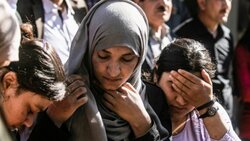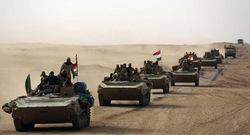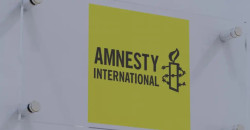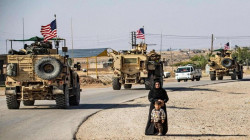Worrying signs exist that IS growing stronger in Syria
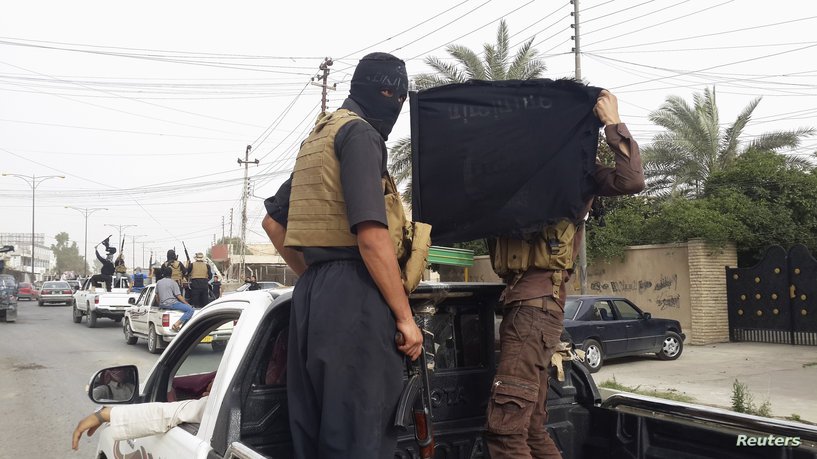
Shafaq News/ Slowly but surely, the Islamic State terror group seems to be regaining its footing in Syria, launching new and brazen attacks against forces loyal to Syrian President Bashar al-Assad.
Just-released data from U.S. Central Command, which oversees U.S. forces across the Middle East and South Asia, puts the number of Islamic State fighters in Syria and Iraq at about 2,500 — more than double estimates from late January.
And a series of new studies is adding to the concern.
The nonprofit Counter Extremism Project (CEP), in a report released earlier this week, counted at least 69 confirmed attacks by the Islamic State group, also known as IS, ISIS or Daesh, in central Syria last month.
The attacks resulted in the deaths of at least 84 Syrian soldiers and 44 civilians, and more than doubled the total number of confirmed IS operations for all of 2024.
"March was, by every metric, the most violent month of ISIS’s Badia [central Syrian desert] insurgency since late 2017, when the group first lost control of its territory," according to the CEP report.
"The unique and alarming difference in March was the scale of attacks against security forces," the report added. "ISIS cells successfully and consistently targeted regime outposts and ambushed patrols, frequently capturing and executing soldiers."
And at a time when most of the world is focused on Islamic State’s Afghan affiliate, blamed for the deadly attack last month on a concert hall near Moscow, CEP is not alone in its warning about the group’s Syrian operatives.
A separate report this week published by the pro-Kurdish Rojava Information Center (RIC), found IS maintained a high tempo of attacks in parts of Syria nominally controlled by the U.S.-backed Syrian Democratic Forces or SDF.
RIC’s monthly sleeper cell report counted 27 Islamic State attacks in March, following 26 in February and 16 this past January.
The RIC report also noted a heavy focus by IS on targeting SDF troops and locations, including at least three attacks from March 7 through March 15.
The concerns about the upswing in IS attacks across Syria are not new.
Officials with the SDF’s political wing told VOA this past January that the terror group’s activities had "increased significantly," both in areas patrolled by the SDF and in areas overseen by the Assad regime.
An intelligence assessment compiled by the United Nations and issued in January, based on information from member states, likewise warned IS was poised for a possible resurgence.
The U.N. report said Islamic State still likely had between 3,000 to 5,000 fighters across Syria and Iraq, adding that the central Syria desert had become "a logistics and operations hub with 500 to 600 fighters."
Still, many U.S. officials have expressed skepticism about the nature of the rebirth of IS in Syria.
The terror group is "struggling in many ways to mount a major capability that is relevant to the United States," said National Counterterrorism Center Director Christine Abizaid during an appearance this week on the In the Room podcast with terrorism analyst Peter Bergen.
And the Worldwide Threat Assessment, issued last month by the Office of the Director of National Intelligence, cautioned that while IS remains a centralized global terror organization, "it has been forced to rely on regional branches in response to successive leadership losses during the past few years."
Despite such differences, many counterterrorism officials and independent analysts agree Islamic State is still nowhere near reasserting itself in a way that resembles the terror group’s heyday six to eight years ago, when it controlled large swaths of Syria and Iraq.
Some caution, though, that even modest growth is reason for worry.
"The Islamic State always maintained capacity, even though it lost its control of Mosul and Raqqa and other strongholds," said Bill Roggio, a senior fellow at the Washington-based Foundation for Defense of Democracies.
"It was never truly defeated … because we never do enough to actually defeat them," Roggio told VOA. "And in places like Syria, it's extremely difficult because who do you work with, who do you partner with to do that?"
The U.S. partner in northeastern Syria is the Kurdish-led SDF, charged not only with conducting ongoing operations to counter IS but it has also been responsible for a series of prisons holding some 9,000 former IS fighters and for overseeing security at displaced persons camps, like al-Hol, which remain home to tens of thousands of IS wives and children.
Further complicating matters, the SDF has increasingly found itself in conflict with Turkish forces, who view it as an extension of the Kurdistan Workers’ Party, or PKK, labeled as a terror organization by both Ankara and Washington. And some 900 mostly U.S. special forces in Syria have been distracted by recent drone and rocket attacks targeting U.S. bases by Iranian-backed militias.
Meanwhile, the U.S. and its SDF allies have little reach into parts of central Syria, where forces loyal to the Assad regime battle Islamic State cells with Russian support.
U.S. officials have long criticized those Syrian and Russian efforts as insufficient.
"The Russians really, in my estimation, are in the same mode as the U.S.," Roggio said. "They're doing enough to keep the Assad regime propped up and keep them alive and keep the pressure on the Islamic State. But they have bigger fish to fry in Ukraine."
"They're not devoting the resources and the energy to defeat the Islamic State in Syria," he added.
And some former officials warn that any goodwill between Russia and the U.S. when it comes to battling the Islamic State has long since dried up.
"It’s [Russia’s] been consulted," said Edmund Fitton-Brown, a former senior United Nations counterterrorism official who currently serves as a senior adviser for CEP. "And now we seem to have lost that."
"That is a problem because some of the people who are best equipped to analyze and predict what might happen are not playing ball," Fitton-Brown told VOA following last month’s IS attack in Russia.
The Kremlin is "capable of helping in this if they wanted to, but they don’t," he said.
Experts and analysts warn these sorts of problems provide IS with fertile ground to grow its forces and its operations.
For now, though, those efforts still seem to be in the early stages.
"ISIS is not poised to capture major cities … and likely will be unable to capture smaller strategic objectives," the CEP report said. "However, March’s attacks appear to show a pattern in which ISIS cells have seized control over much of the 'empty' space outside hardened regime positions."
(VOA)
Disclaimer: The views expressed in this report do not necessarily reflect the official standpoint of Shafaq News Agency.
